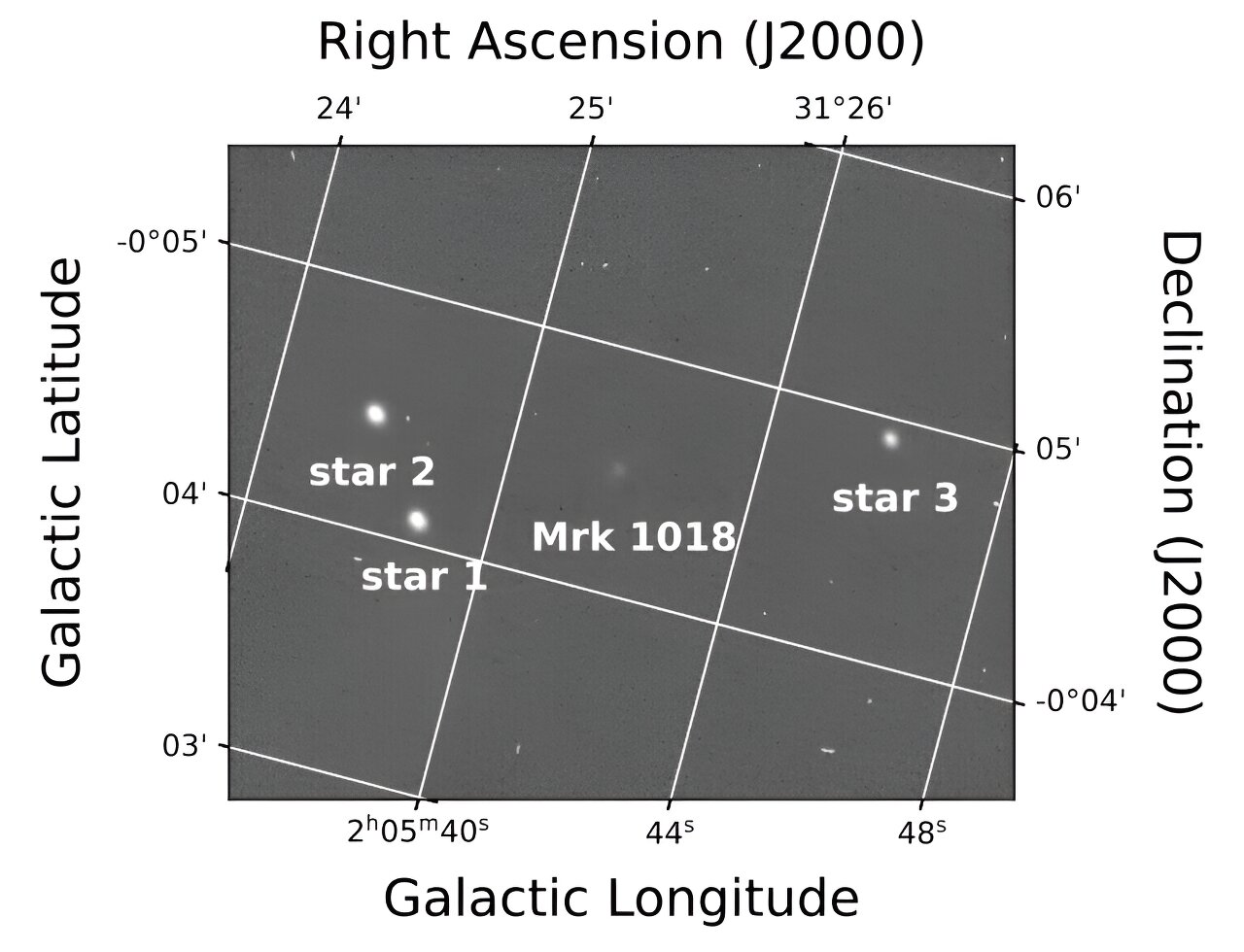Get ready to dive into the fascinating world of active galaxies! An international team of astronomers has been closely monitoring Markarian 1018, an active galaxy that has recently experienced an outburst. The results of their observations, published on the pre-print server arXiv on July 26, provide valuable insights into the nature of this galactic event.
An active galactic nucleus (AGN) is a powerhouse of energy at the center of a galaxy, shining brighter than the rest of the galaxy combined. AGNs can be fueled by either a black hole or intense star formation activity. Astronomers categorize AGNs into two types based on their emission line features: Type 1 AGNs exhibit both broad and narrow emission lines, while Type 2 AGNs only show narrow emission lines. However, there are some AGNs that defy categorization and undergo transitions between different spectral types. These enigmatic AGNs are known as changing-look (CL) AGNs.
Markarian 1018, also known as Mrk 1018, is an active galaxy and AGN system located at a redshift of 0.043. It has a fascinating history as a post-merger remnant, with a visibly irregular host galaxy and a tidal tail. Previous observations have revealed that Mrk 1018 belongs to a rare group of CL-AGNs that have undergone multiple transitions.
In October 2019, a team of astronomers led by Roisín Brogan from the University of Potsdam in Germany embarked on a high-cadence optical monitoring campaign of Mrk 1018. Using the powerful STELLA telescopes at the Izana Observatory in Tenerife, Spain, they captured an extraordinary outburst in mid-2020.
Their observations unveiled intriguing details about the outburst. It was asymmetric, with a rapid rise in less than 100 days followed by a gradual decline lasting at least 200 days. Surprisingly, the decline followed a linear pattern, indicating that the outburst was not caused by a tidal disruption event (TDE), which typically exhibit a power-law decline.
The team also analyzed X-ray and ultraviolet XMM-Newton observations taken before and after the optical peak of the outburst. They found no evidence of intrinsic absorption, ruling out the possibility that the increase in emission was due to a temporary decrease in obscuring material.
All in all, the results suggest that the outburst in Mrk 1018 was most likely triggered by a significant, short-term increase in the accretion rate. The astronomers propose several explanations, including chaotic cold accretion (CCA), binary black holes (BBH), or a recoiling supermassive black hole (rSMBH).








